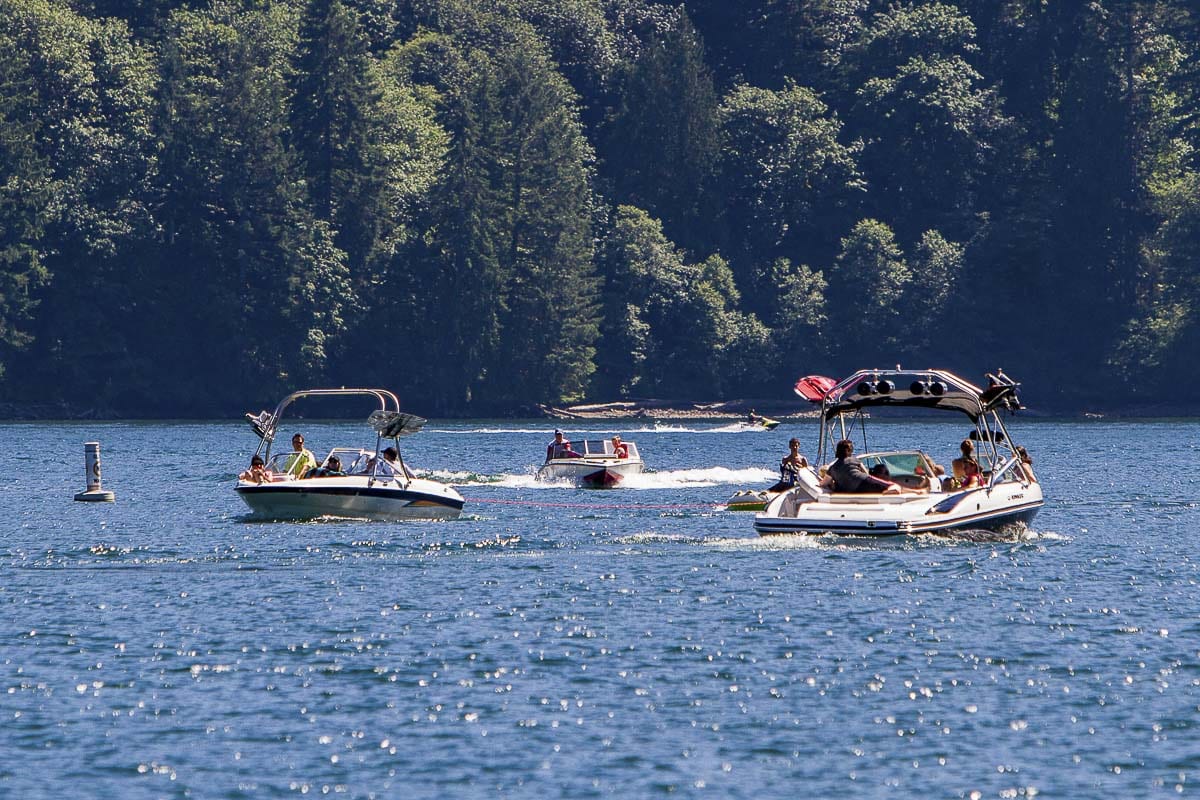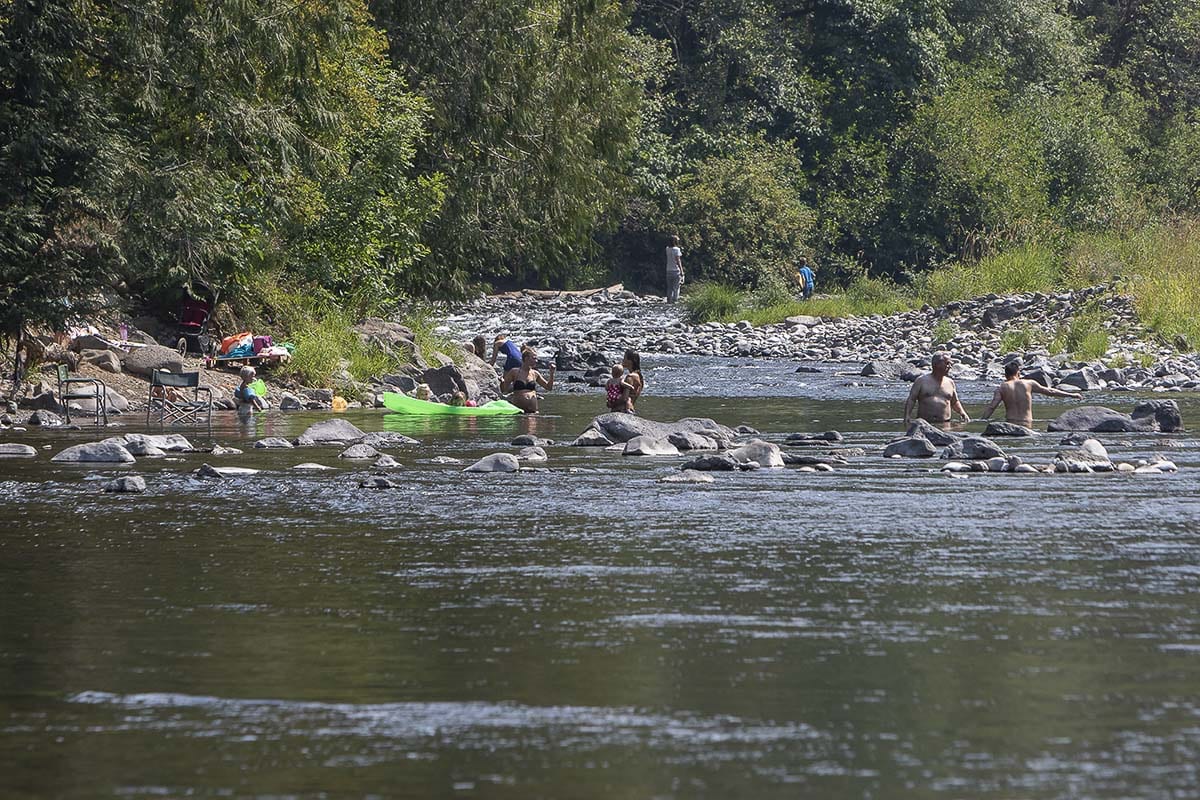Public Health encourages everyone to follow a few simple strategies to stay safe while enjoying the water
VANCOUVER — With the recent opening of outdoor recreation by Gov. Jay Inslee and warm weather on the horizon, Clark County residents may soon be heading to local waterways for the first swim of the season. But area lakes and rivers are still cold, and water may be moving quickly.
Public Health encourages everyone to follow a few simple strategies to stay safe while enjoying the water now and throughout the summer.

Know the water conditions
- Lakes and rivers in Southwest Washington are still cold enough to shock and immobilize even the strongest of swimmers.
- Rivers are high and swift from rain and snow melt and may be carrying debris.
- Avoid fast-flowing waters. This includes rivers and ocean beaches with riptides.
- Know your limits. Drowning often occurs when a swimmer tires.
- Don’t swim alone.
In addition to monitoring river conditions, Public Health urges people of all ages to follow these tips for safe swimming and recreating in all bodies of water:
- Never leave children unsupervised in or near water. Drowning can happen swiftly and silently. Supervision requires complete attention, even if another adult is present.
- Wear a life jacket when swimming anywhere without lifeguards or whenever on a boat, personal watercraft, inner tube or other water sport equipment.
- Ensure children always wear life jackets. Inflatable toys do not keep children safe. By law, children 12 and younger must wear a U.S. Coast Guard-approved life jacket or vest on all vessels 18 feet or smaller.
- Avoid alcohol and marijuana use when swimming or boating.
- Don’t dive into shallow water or jump off of bridges or cliffs.
- Swim in designated swimming areas only. Signs will be viewable letting you know when and where it’s safe to swim.
Protect yourself, kids and pets from blue-green algae
Cyanobacteria, more commonly known as harmful blue-green algal blooms, have already been identified at several waterbodies in Clark County and likely to appear throughout the summer and into the fall. These blooms can produce toxins that are harmful to animals and people. Pets, especially cats and dogs, are inquisitive and may not hesitate before swimming or drinking water, even if algae is present. Animals are also at risk if they lick algae caught in their fur after being in the water or eat dried clumps of algae along the shore.
Before heading out to the water, check for advisories on the Public Health swim beach webpage. And while visiting local water bodies, follow these tips to avoid exposure to harmful blue-green algal blooms:
- Do not drink, wade, or swim in water that looks discolored or appears that algae may be present. Learn more about toxic algae here.
- Check if a waterbody has a reported bloom by viewing the swim beach webpage and look for posted advisory signs.
- Check for visual signs of a bloom. Water can look like green or blue paint has been dumped in the water, creating the appearance of scum or soap.
- Never let your dog eat scum or algae.
- Always shower after water contact and wash pets with clean water.
- When in doubt, stay out! Cyanotoxins are released as algae cells die off. So even after a bloom has dissipated, toxins may still be present.
Understand the risks
Lower levels of toxins can have more severe, sometimes fatal, effects on animals, due to their smaller body mass than humans. Animals can experience symptoms within minutes to days following exposure to the toxins. Symptoms include vomiting, diarrhea, weakness, difficulty breathing, seizure, or death. If your pet experiences these symptoms after exposure, contact your veterinarian immediately.

Humans can also experience the harmful effects of cyanobacteria and cyanotoxin exposure. The most common exposures to cyanobacteria and their toxins occur during swimming or participating in other recreational activities in and on the water. Most common exposures and symptoms include:
- When water that contains toxic algae is purposefully or accidentally ingested. This can cause abdominal pain, nausea, vomiting, diarrhea, headache, fever, jaundice, dark urine, and loss of appetite.
- Skin exposure by direct contact to water containing toxic algae or when it accumulates in bathing suits, particularly diving suites. Common symptoms from this type of exposure are rash, itching, blisters, and eye irritation.
- Inhalation of water during water sport activities, such as boating or water skiing, can cause wheezing, coughing, chest tightness, and shortness of breath.
- Serious symptoms of harmful blue-green algal bloom exposure can include muscle twitches, numbness, muscle paralysis, and incoherent speech.
If you do come into contact with water that is known to have cyanobacteria and/or cyanotoxins, rinse off with clean, fresh water as soon as possible.
Seek medical treatment right away if you think you or someone you know might have been exposed to cyanobacterial toxins, especially when any of the symptoms mentioned above are recognized.
Information provided by Clark Co. WA Communications.




